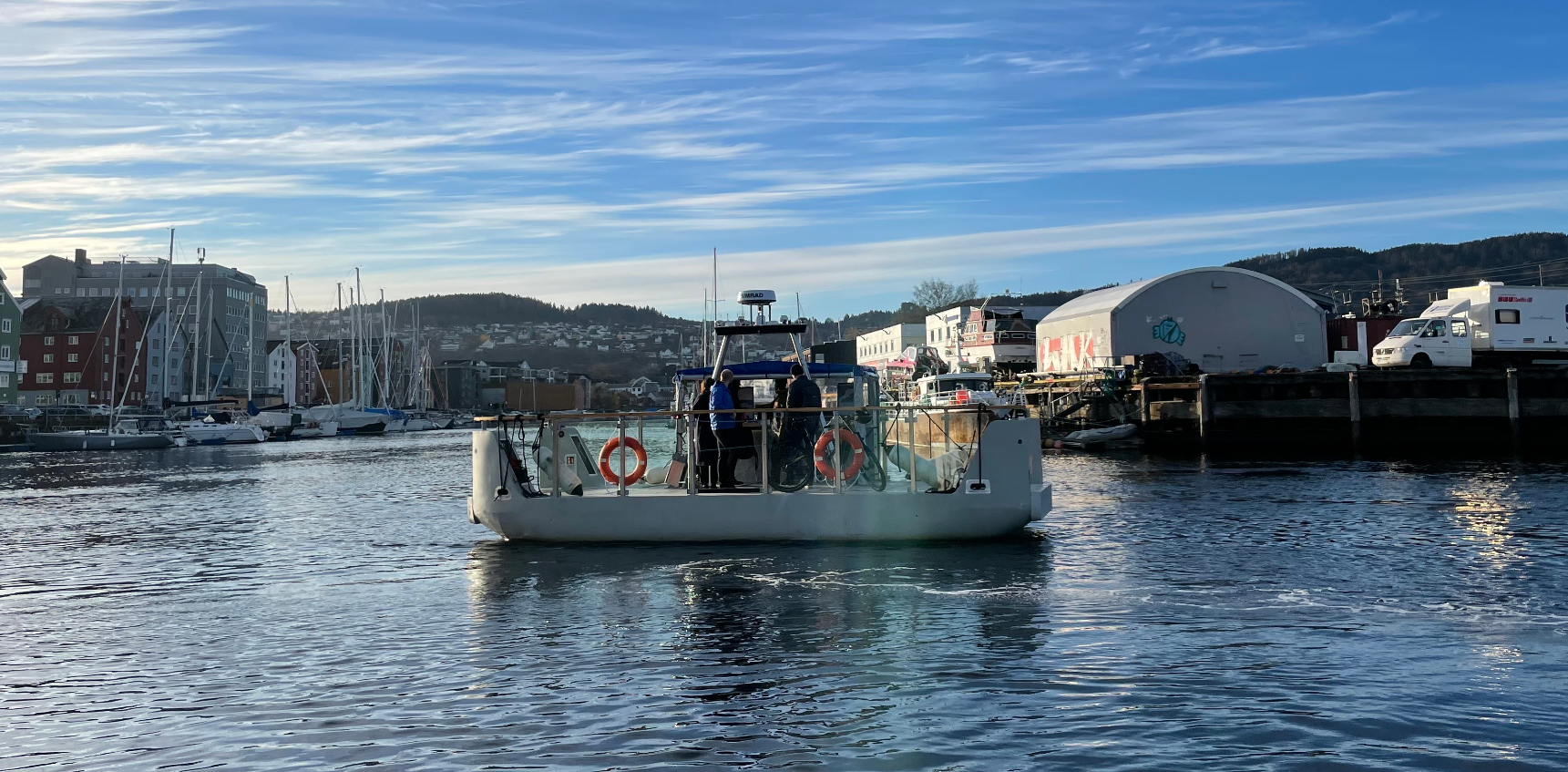Background
Over the past decade, NTNU has developed concepts and technology related to autonomy for maritime surface vessels. One outcome of this research is milliAmpere1 and milliAmpere2. The milliAmpere1 is a half-scale prototype for an autonomous passenger ferry, and is under continuous development. It has the capacity to perform fully autonomous transit operations, which is demonstrated through a 3 hour continuous autonomous operation in a canal in Trondheim (video below). The milliAmpere2 is a full-scale autonomous passenger ferry (bottom picture), and is set to demonstrate an autonomous passenger ferry service concept in Trondheim in 2022. In 2019, the sum of the research on maritime autonomy at NTNU culminated in NTNU establishing Zeabuz, a company aiming to make maritime autonomy accessible to mobility changemakers globally, enabling radically new transportation systems along urban waterways.
 |
| Video with milliAmpere1 operating in canal in Trondheim |
The focus of this project will be on trajectory planning and collision avoidance for autonomous passenger ferries operating in confined environments like urban areas, canals and ports, where both static and dynamic obstacles must be considered simultaneously. Furthermore, considerations should be made to a subset of the rules in the COLREGs, the “rules of the road” on water, which apply to all vessels.
The ambition for the combined work of the project thesis and subsequent Master’s thesis should be to develop an algorithm for long-term (5-10 min) trajectory planning where the algorithm produces COLREGs-compliant, dynamically feasible trajectories. Furthermore, the trajectory should show a good tradeoff between safety and efficiency. The candidate is encouraged to solve the problem by the use of optimization tools like CasADi, which has a good API for Matlab and Python.
The thesis proposal is given by NTNU in collaboration with Zeabuz. It will be supervised by Morten Breivik from NTNU, and Emil Thyri from Zeabuz. This enables the candidate to utilize existing resources from both Zeabuz and NTNU when needed. Furthermore, the experimental platforms of NTNU makes it possible to participate in full-scale experiments to test and demonstrate the capacity of the developed algorithms.
This task is comprehensive, and requires a candidate that is ambitious and motivated to work in the field of maritime autonomy.
 |
| milliAmpere2 during initial sea-trials. |
Prerequisites
The task is focused on a practical problem, while solving it requires a good theoretical understanding of the underlying aspects. The candidate should favour such a combination. Subjects within guidance and control of marine vessels, and optimization, e.g. TTK4190 Fartøystyring and TTK4135 - Optimalisering og regulering is advantageous. The candidate should have good programming skills in Python (alternatively C++ or Matlab).
Contact
Write a short email where you explain your motivation for this task as well as about your background, and send it to Morten Breivik and Emil Thyri. We will then arrange a meeting with you to discuss the task.